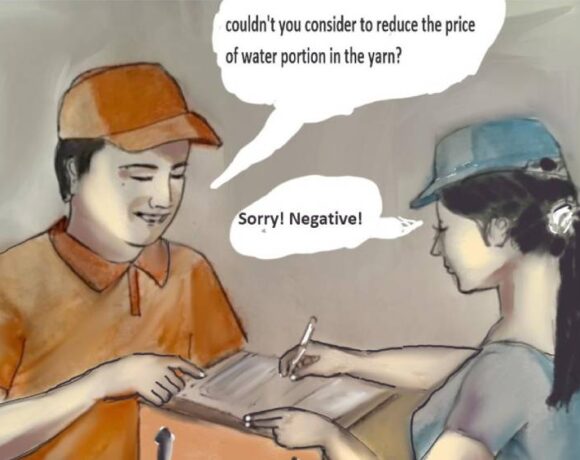Indian Cotton Rates Fall At Slower Pace Versus Global Prices

Global cotton prices fell in the last few weeks. Correspondingly, Indian cotton prices too dipped but albeit at a slower pace.
The May cotton futures contract on ICE, which touched a high of 101.80 cents per pound on February 28 had eased to 83 cents per pound in the second week of April or down nearly 18 percent.
On the other hand, Indian cotton prices fell from Rs 67,000 per candy of 355.6 kg each to Rs 60,000 per candy, slipping by 10.44 percent.
Textile Insights spoke to CMD of Omax Spinners, Jayesh Patel to understand the reason for cotton prices falling in recent weeks.
“The earlier trades were booked at higher prices and deliveries were done. However, countries like Brazil still hold high level of cotton stocks and Australia’s cotton crop will start coming from June,” Patel said.
“The high level of cotton stocks with these two countries led to reduction in prices of ICE Futures. But I do not expect them to reduce further,” Patel added.
There is also a slowdown in export demand for cotton yarn, which is bringing pressure on the domestic market. Moreover cotton is not receiving support from the domestic market.
“If there is support from domestic yarn market then demand for cotton will revive. Prices of 30s combed yarn which were ruling at Rs 270 per kg are now down to Rs 255 per kg,” he stated
Earlier spinning and textile mills used to stock cotton by March which would be enough to manage the requirements till the new cotton season starts. But now many mills are buying cotton on need based basis.
According to Jayesh Patel, this is done by mills, which have future yarn delivery orders for only a month in hand and so they buy cotton accordingly.
“Secondly there are some mills which do not have enough financial resources to stock cotton. But the bigger groups continue to buy and stock cotton which will last till the new season starts,” he noted
However, as per the CMD of Omax mills, managing a mill on a hand to mouth basis is not financially sound for a spinning or textile mill.
“The cotton crop from the first to third picking offers better yarn realisation of 70-73 percent. While, it is just 68-69 percent realisation from fourth cotton picking onwards,” Patel explained.
CCI has stocks of 27-28 lakh bales and multinational cotton traders have around 15 lakh bales of cotton. Both have the best quality cotton in hand, because they started purchasing from the very first cotton picking.
Cotton farmers are still holding on to 10-15 percent of their cotton crop, which could mainly be due to the decline in cotton prices in the last few weeks.
“Cotton farmers with enough financial resources are still holding on to their cotton crops, in order to get higher prices, if cotton prices increase again” Jayesh Patel concluded by saying.














